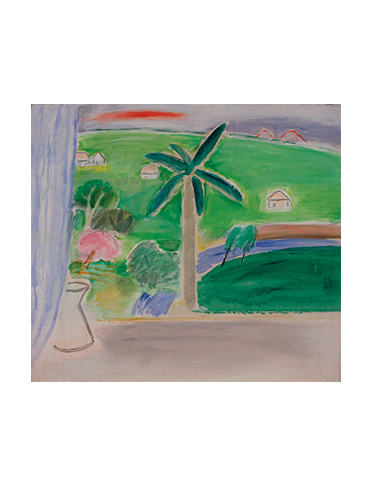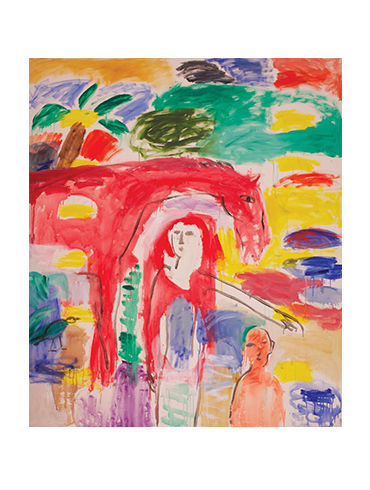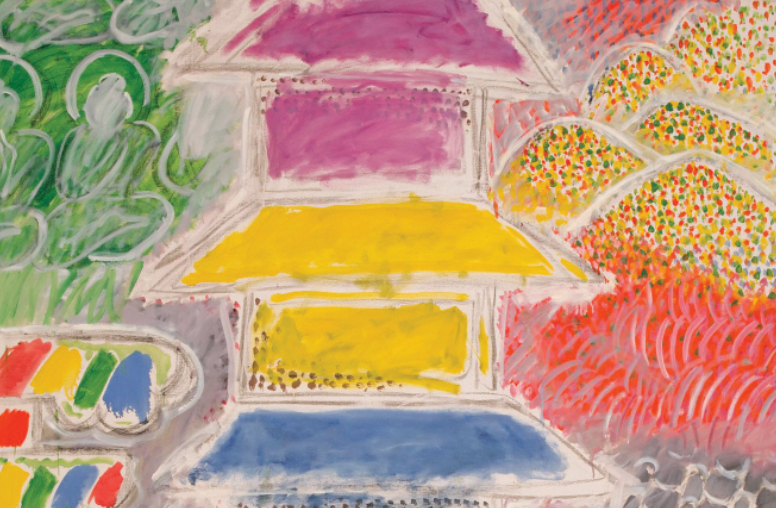본명은 김보현이다. 1917년 경상남도 창녕에서 태어나 대구에서 유년기를 보냈다. 1세대 재일 화가인 김창덕(1910-1983)이 그의 친형이다. 일본 도쿄 메이지 법대와 태평양미술학교에서 수학했다. 일본에서 광주 출신의 첫 부인을 만났고 해방 후 부인의 고향인 광주에 정착했다. 1946년부터 1955년까지 조선대학교 교수로 재직하여 미술대학 창설을 주도했으며 초대 학과장을 지냈다. 당시 동료 교수였던 천경자와 특히 가깝게 지냈다. 서울의 김환기와 남관을 소개받기도 했다. 1955년, 미국 일리노이 대학교(University of Illinois) 연구원으로 초청받아 미국으로 건너갔다. 뉴욕 초기 시절에는 넥타이공장에서 그림 그리는 일을 하며 생계를 꾸렸다. 이후 김환기와 김창열에게 같은 일자리를 소개하기도 했다.
1960년대 초, 뉴욕 현지의 작가들과 활발하게 교류한 기록이 인상적이다. 일리노이 대학교에서 만난 에드윈
루다(Edwin Ruda)와 교류했고, 그에게 소개받은 야요이 쿠사마와 가까이 지냈다. 이후 뉴욕 코엔티 슬립(Coenties Slip)에 모인
작가들과 친분을 쌓았다. 아그네스 마틴, 로버트 인디애나 등이 그 일원이었다. 마틴의 휘트니미술관 단체전 출품작 선정에 도움을 준 것이 계기가
되어 그의 찰스 이간 갤러리(Charles Egan Gallery, 뉴욕) 개인전 기획을 총괄하기도 했다. 1965년부터 1년간 파리에 머무르며
당시 유학 중이던 남관과 교류했다. 1968년, 뉴욕에 돌아와 두 번째 부인 실비아 올드(Sylvia Wald)를 만났다. 부인의 제안에 따라
현지인들이 발음하기 쉬운 ‘포 킴’을 작가명으로 사용하기 시작했다. 이후 뉴욕, 뉴저지, 인디애나, 오하이오, 필라델피아 등 미국 각지와 독일
뮌헨, 바덴바덴 등에서 개인전을 열었다. 다수의 단체전에도 출품했다.
한국 화단에 그의 이름이 본격적으로 알려진 것은 1995년이다. 예술의전당 한가람미술관이 연 원로작가 초대전을 통해서다. 당시 뉴욕 모마(MoMA) 출신의 저명한 큐레이터이자 비평가인 바바라 런던(Barbara London)이 평론을 썼다. 1997년에는 뉴저지 짐멀리 미술관에서 연 《아시아의 전통/현대적 표현: 아시아계 미국인 작가들과 추상 1945-70》에 참가했다. 한국, 중국, 일본 작가 57인의 작품 150점을 선보인 전시로, 김환기 등 9인의 한인 작가가 출품했다. 2007년, 국립현대미술관(덕수궁)이 포 킴의 화업 60년을 정리하는 대규모 기획전 《고통과 환희의 변주: 김보현의 화업 60년전》을 선보였다. 2011년 조선대학교 미술관 내 ‘김보현 & 실비아 올드 미술관’이 설립되었다. 2013년에 재외 동포 유공자로서의 업적을 인정받아 대한민국 국민훈장 동백장을 받았다. 같은 해 경남도립미술관이 작가 부부의 전시 《김보현과 실비아 올드》를 개최했다. 2014년, 향년 97세로 별세했다. 2017년에 환기미술관이 화가의 탄생 100주기를 기리는 회고전 《포 킴–그때와 지금》을 선보였다.













































